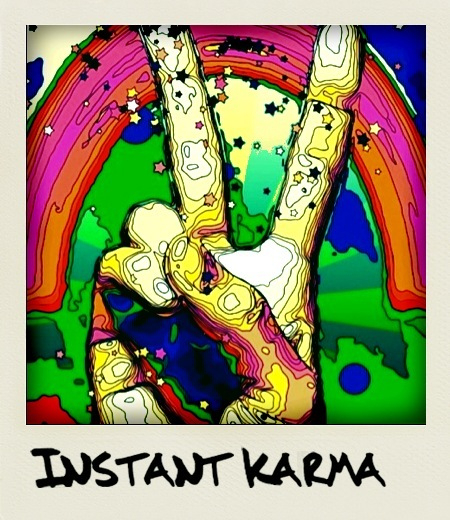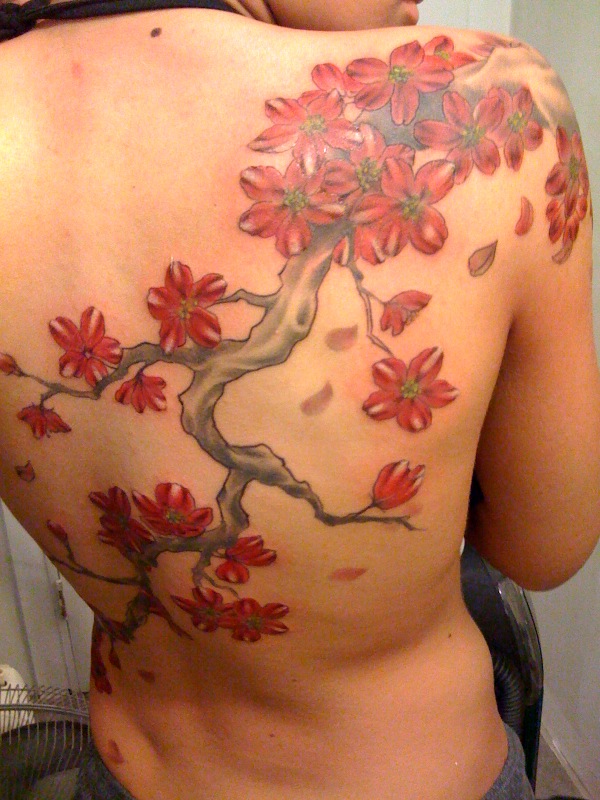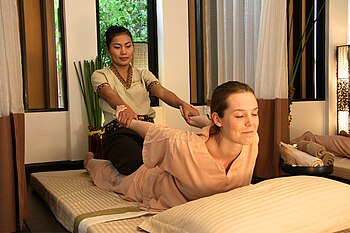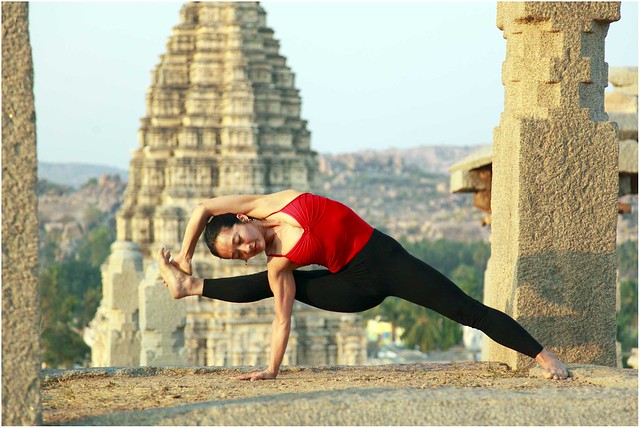 |
| Instant Karma - Photo by -Jeffrey- |
Of course that not all the karma that we generate is the same, there is a kind of karma that ties us or chains us to this life and another kind of karma that liberates us of the reincarnation cycle.
The karma that chains us, known as Vishayakarma, has as fruits the misery and the lack of interior peace, while the karma generated by good actions or disinterested actions, know as the Sreyokarma allow us to reach the prosperity and the happiness of the soul, that it is much more than reaching the simple external happiness.
Every time that we face an activity with the desire of obtaining a certain result, this throws us into the arms of the desire, the greed and the ego demons, while only the pure actions that we do for love without taking into account the possible consequences of them, are the kind of actions that drive us little by little toward the illumination and the liberation.
That one whose nature allows them to carry out this kind of unselfish activities, little by little realize that God provides them of all that they need and of all that confers them the interior peace. Another form of achieving the yearned interior peace is the meditation.
Perhaps you might ask yourself why? Why is the meditation so necessary?
Because the man always acts in two dimensions, the external dimension governed by the physical senses, and the internal dimension governed by the intelligence and the mind.
The internal conscience cannot move for itself, but rather needs the guidance of the intelligence and the mind, that are the ones related to the external world, they are as the oxen that pull a carriage. These oxen are anxious to begin to walk but to take us to the correct destination they should be educated, they should be indicated which is the route that takes us to the place to which wants to arrive the internal conscience. And these are the roads of the Truth, the Rightness, the Peace and the Love.
Then to liberate us from the enslaving karma, it is necessary to teach the intelligence and mind's oxen the art of dragging the carriage of the internal conscience, and this is achieved by means of the practices of the meditation and the repetition of the name of God.
and the repetition of the name of God.
And the conscience, to be able to guide the oxen of the intelligence and the mind, must calm and control the conflicting desires that infest the mind, and this is achieved when we learn how to point our mind to a single direction.
When thanks to the meditation, the bewildered mind dives in the view and repetition of the name of the Lord, the Divine Splendor able to burn the wrong and to illuminate the happiness is manifested.
It is easy to understand the benefits of the meditation. Anyone that undertakes a task, knows that only when he concentrates his efforts toward a single point, he can achieve the desired success. Even the most insignificant tasks require concentration, and the power of an unshakable effort is so big, that even the worst difficulties surrender to it.
When we practice the meditation in the Supreme Being, the mind learns how to retire its attention from the material objects, and the life acquires a new splendor when we get aware of the Divine Essence that is inside us and guides us into the state of Blessedness.
How sweet is a fruit? There's no way to explain that appropriately, the only way of knowing that is to eat the fruit.
How good is the meditation? There's no way of knowing the taste of its fruits until we don't decide to experience it.











